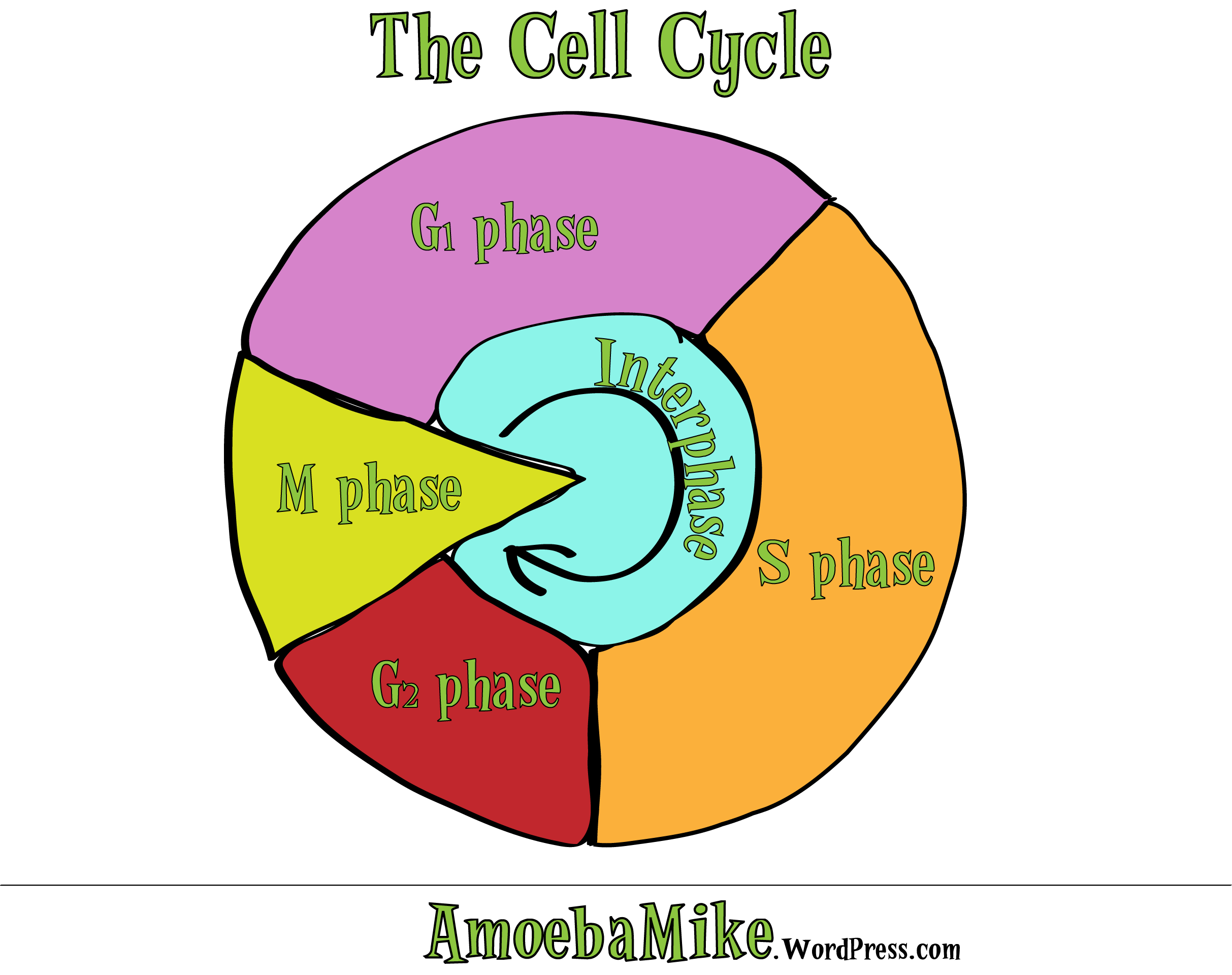
Cell Division An Intro AmoebaMike
A cell spends most of its time in what is called interphase, and during this time it grows, replicates its chromosomes, and prepares for cell division. The cell then leaves interphase, undergoes mitosis, and completes its division. The resulting cells, known as daughter cells, each enter their own interphase and begin a new round of the cell cycle.
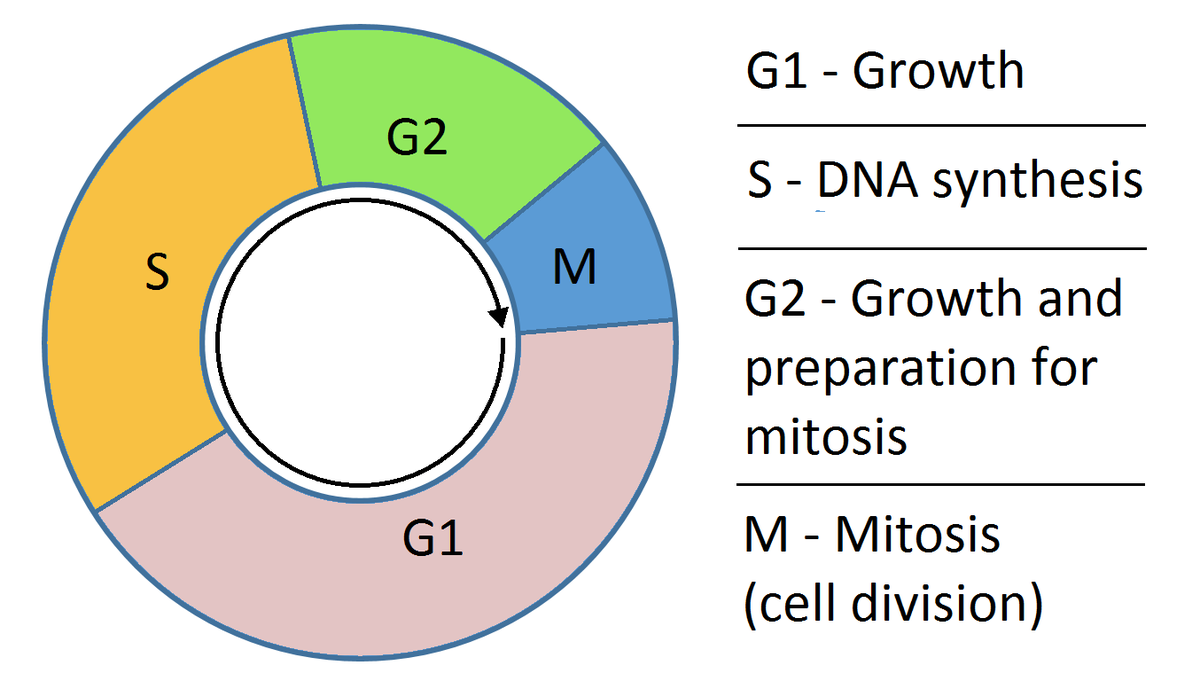
Draw a neat labelled diagram of cell cycle.
In the cell cycle, interphase doesn't just occur before mitosis—it also alternates with mitosis. It's important to remember that this is a recurring cycle. When mitosis ends, interphase starts up again! In fact, in the grand scheme of the cell cycle, mitosis is a much shorter phase than interphase. (Kelvinsong/Wikimedia Commons) Phase 1.

Cell Cycle Phases , Diagram , Types and Comparison
Cytokinesis, the process of cell division, occurs during the last stage of mitosis (telophase). Some cells do not go though mitosis. In this case, these cells move from G 1 of the cell cycle into a resting phase known as G 0. Sometimes a cell in G 0 will move back into G 1 and continue through the cell cycle.

Cell cycle labelling. Schematic representation of the cell cycle and
To put that another way, meiosis in humans is a division process that takes us from a diploid cell—one with two sets of chromosomes—to haploid cells—ones with a single set of chromosomes. In humans, the haploid cells made in meiosis are sperm and eggs. When a sperm and an egg join in fertilization, the two haploid sets of chromosomes form a complete diploid set: a new genome.

Labeled Diagram Of The Cell Cycle Diagram Pinterest School, Life
The cell cycle is a cycle of stages that cells pass through to allow them to divide and produce new cells. It is sometimes referred to as the "cell division cycle" for that reason. New cells are born through the division of their "parent" cell, producing two "daughter" cells from one single "parent" cell.

Cell Cycle and Mitosis Worksheet
What is mitosis? Mitosis is a type of cell division in which one cell (the mother) divides to produce two new cells (the daughters) that are genetically identical to itself. In the context of the cell cycle, mitosis is the part of the division process in which the DNA of the cell's nucleus is split into two equal sets of chromosomes.

What is a cell? Facts
The cell cycle is an orderly sequence of events. Cells on the path to cell division proceed through a series of precisely timed and carefully regulated stages. In eukaryotes, the cell cycle consists of a long preparatory period, called interphase. Interphase is divided into G 1, S, and G 2 phases.
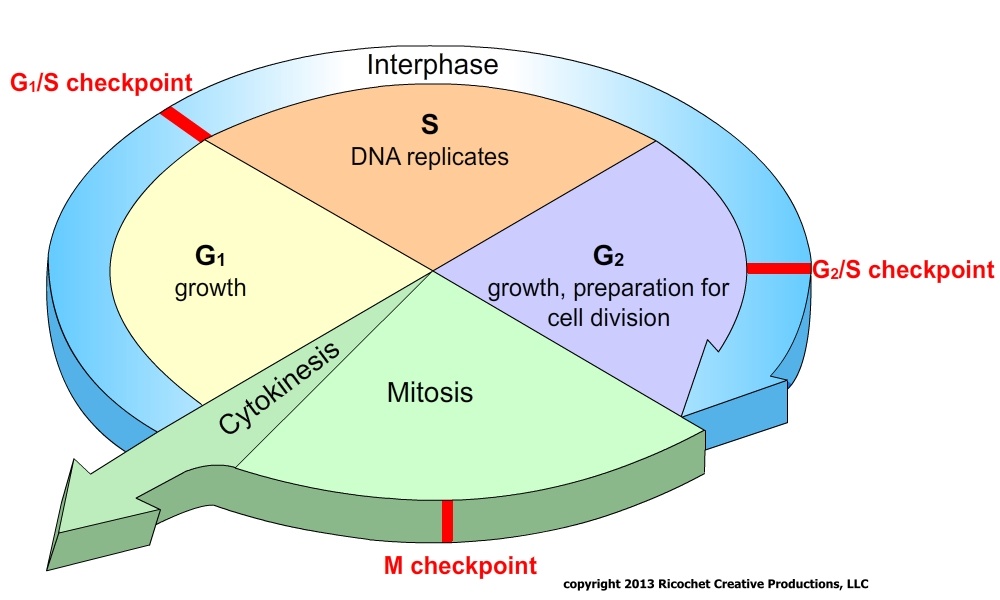
Mrs.Cruz's Biology Class Chapter 5 Cell Growth and Division
Cell Cycle Diagram Phases of the Cell Cycle As mentioned, the cell goes through a series of events in a specific order to divide. It all starts with the parent cell growing in size and then making a copy of its genetic material. Finally, they split to produce two daughter cells.

The Cell Cycle and Mitosis Reproduction MCAT Biology Review
The most basic function of the cell cycle is to duplicate accurately the vast amount of DNA in the chromosomes and then segregate the copies precisely into two genetically identical daughter cells. These processes define the two major phases of the cell cycle.

The Cell Cycle · Concepts of Biology
The cell cycle has two major phases: interphase and the mitotic phase (Figure 6.2.1 6.2. 1 ). During interphase, the cell grows and DNA is replicated. During the mitotic phase, the replicated DNA and cytoplasmic contents are separated and the cell divides. Figure 6.2.1 6.2. 1: A cell moves through a series of phases in an orderly manner.

The Cell Cycle Interphase & Mitosis ALevel Biology Revision Notes
The cell cycle. In eukaryotic cells, the cell cycle is divided into two major phases: interphase and mitosis (or the mitotic (M) phase). Interphase is the longest part of the cell cycle. This is when the cell grows and copies its DNA before moving into mitosis. During mitosis, chromosomes will align, separate, and move into new daughter cells.

Pin by JAYASREE GANESAN on Biology Plant cell diagram, Cell diagram
cell cycle, the ordered sequence of events that occur in a cell in preparation for cell division.The cell cycle is a four-stage process in which the cell increases in size (gap 1, or G1, stage), copies its DNA (synthesis, or S, stage), prepares to divide (gap 2, or G2, stage), and divides (mitosis, or M, stage).The stages G1, S, and G2 make up interphase, which accounts for the span between.
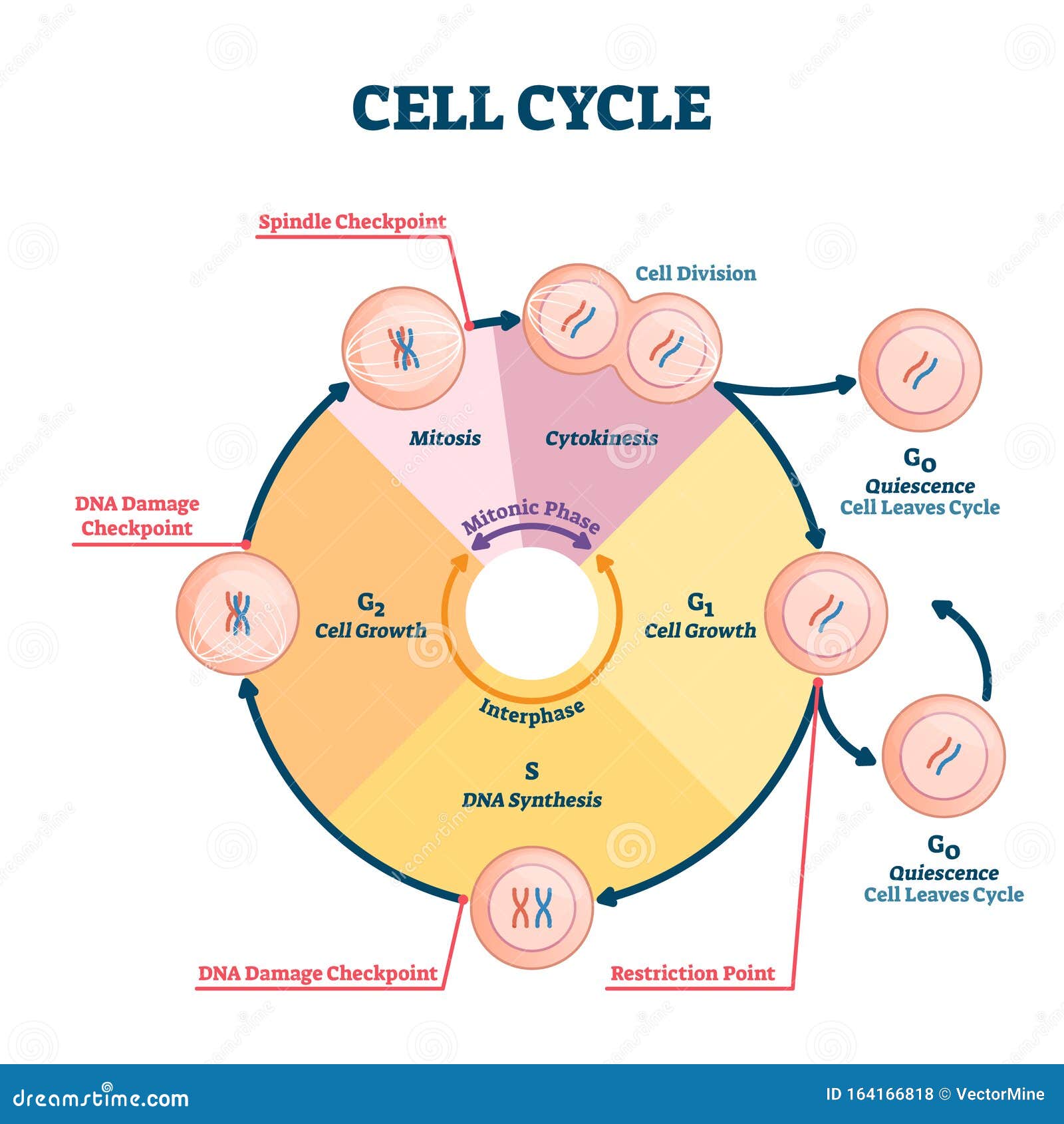
Cell Cycle Phases Vector Illustration 250761614
The cell cycle is an ordered series of events involving cell growth and cell division that produces two new daughter cells. Cells on the path to cell division proceed through a series of precisely timed and carefully regulated stages of growth, DNA replication, and division that produce two genetically identical cells.

101 Diagramss of a Cell 101 Diagrams
Diagram of cell cycle with checkpoints marked. G1 checkpoint is near the end of G1 (close to the G1/S transition). G2 checkpoint is near the end of G2 (close to the G2/M transition).. This article gives a high-level overview of cell cycle control, outlining the factors that influence a cell's decision to pause or progress at each.
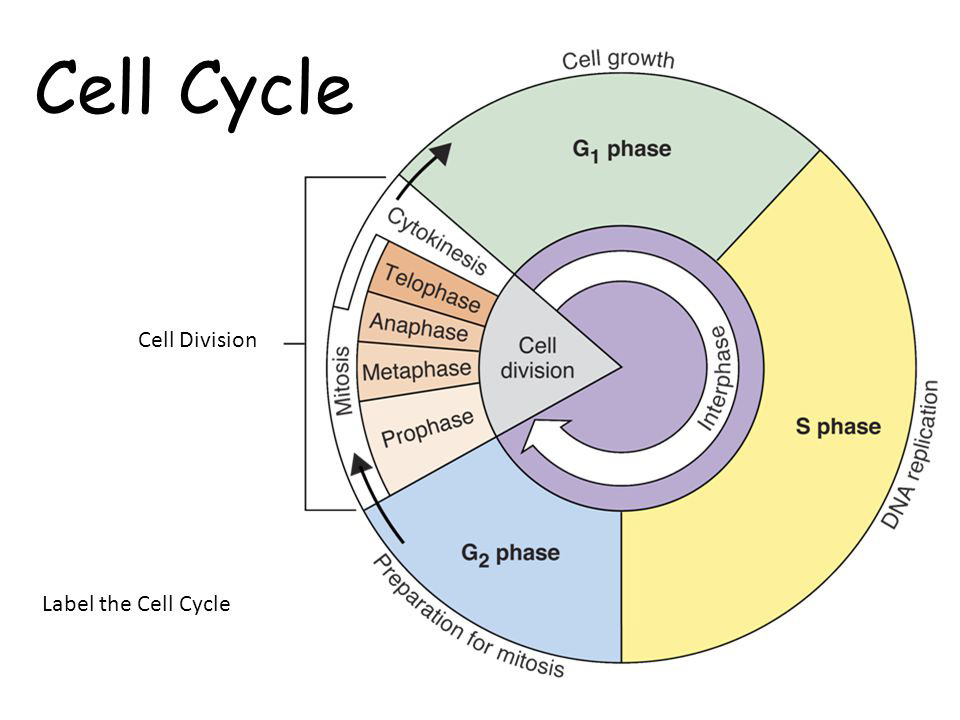
Phases of Cell cycle Online Biology Notes
The cell cycle is an ordered series of events involving cell growth and cell division that produces two new daughter cells. Cells on the path to cell division proceed through a series of precisely timed and carefully regulated stages of growth, DNA replication, and division that produce two genetically identical cells.

Cell Cycle
Label the Cell Cycle Diagram | Quizlet Science Biology Cell Biology Label the Cell Cycle + − Flashcards Learn Test Match Q-Chat Created by ramireza08 Teacher This quiz is over the cell cycle. Label the diagram and match the descriptions with each label. Terms in this set (12) cell cycle